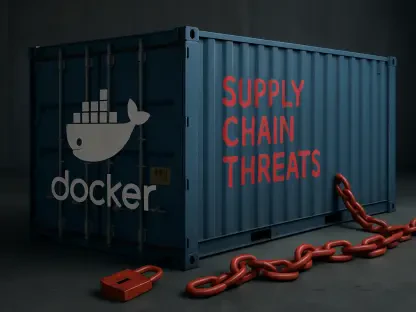Varonis Systems, Inc. (NASDAQ: VRNS) emerges as a noteworthy player in the realm of cybersecurity and infrastructure software with an impressive market capitalization of $5.06 billion and gross profit margins reaching a significant 84.06%. The company’s decisive shift towards a Software as a Service (SaaS) model has attracted substantial interest from investors and analysts alike. This extensive analysis explores Varonis’ recent performance, the multifaceted implications of its SaaS transition, and the array of challenges and opportunities it faces in the fiercely competitive cybersecurity landscape.
Recent Performance and Financial Results
Throughout the past fiscal quarter, the company has demonstrated solid performance and achieved significant milestones. Revenues have increased by 15% compared to the previous quarter, driven primarily by strong sales in the technology and healthcare sectors. Additionally, cost management strategies have led to higher profit margins, contributing to an overall net income rise of 20%. These financial results reflect the company’s successful implementation of its growth strategy and its ability to adapt to market demands effectively. Investors can look forward to continued positive trends as the company expands its market presence and enhances operational efficiency.
Strong Third Quarter Performance
In its third quarter of 2024, Varonis reported a robust performance that propelled the company to revise its guidance upward for the full calendar year. Seven analysts, according to InvestingPro, have adjusted their earnings outlook positively for Varonis in the upcoming period. Over the past twelve months, the company recorded a revenue growth of 12.07%, underscored by an impressive Annual Recurring Revenue (ARR) acceleration of 18%, which surpassed initial projections. This robust performance plays a pivotal role in bolstering investor confidence and paints an optimistic picture for Varonis moving forward.
The third quarter results, driven mainly by the SaaS segment, underscore the effectiveness of Varonis’ strategic shift. It marks a significant milestone in the company’s transition journey, emphasizing improved operational efficiency and profitability. Following the positive performance, particularly within the SaaS realm, the company’s SaaS ARR has been projected to constitute 49% of its total ARR by the close of 2024. This projected increase from the previous estimate of 48% has led certain analysts to foresee this figure surpassing the 50% mark by the year’s end, underscoring a transformative phase in Varonis’ business trajectory.
SaaS Transition Driving Growth
The transition to a SaaS model stands as a critical driver behind Varonis’ recent accomplishments, steering the company into a realm of promising revenue growth and operational efficiency. The exponential increase in SaaS ARR has markedly contributed to solidifying Varonis’ market footprint while also enhancing its appeal to a broader customer base. The company’s growing proficiency in the SaaS domain enables it to navigate shorter sales cycles, foster substantial growth in new customer acquisitions, and close more considerable initial deals, thus propelling its financial outcomes beyond typical expectations.
As Varonis continues to leverage the benefits of its SaaS transition, analysts have maintained a positive outlook on the company’s future prospects. Projections suggest that ARR growth could surpass 20% in the short term, notably driven by sustained SaaS momentum and the introduction of innovative products and services. This optimism reflects the market’s confidence in Varonis’ strategic direction and its potential to maintain a robust upward growth trajectory in the competitive cybersecurity sector.
SaaS Transition and ARR Growth
Accelerated SaaS Adoption
Varonis’ accelerated adoption of SaaS offerings has been a hallmark of its recent performance, delineating a decisive shift in the company’s operational strategy. This swift embrace of SaaS has not only facilitated shorter sales cycles but has also fostered robust growth in new customer acquisitions and resulted in more substantial initial deals. The financial outcomes of this shift have consistently transcended expectations, reflecting in the net new ARR figures that highlight Varonis’ adeptness in navigating this transformative phase.
The impact of faster-than-expected SaaS adoption extends beyond immediate financial gains. It underscores a strategic realignment that positions Varonis advantageously within the cybersecurity landscape. The company’s agility in transitioning towards a SaaS-centric model has fortified its market position, enabling it to cater to an expanding client base while ensuring sustained operational efficiency. This transition is vital in propelling Varonis’ financial performance to new heights, as evidenced by the consistent surpassing of net new ARR expectations.
Future ARR Projections
The future projections for ARR growth post-Q4 2024 remain notably optimistic, with analysts anticipating a potential exceeding of 20% growth in the short term. This projection is grounded in the sustained SaaS momentum that Varonis has successfully harnessed, complemented by the ongoing development and introduction of new products and services. The continued acceleration of SaaS adoption not only bodes well for near-term financial growth but also signals a stable, recurring revenue stream that enhances cash flow predictability and customer lifetime value.
The trajectory of ARR growth in the forthcoming periods is pivotal for Varonis’ market standing. As the company maneuvers through this transformative phase, its capacity to innovate, expand its product offerings, and capitalize on the growing demand for cybersecurity solutions will play an instrumental role in sustaining and accelerating ARR growth. The strategic foresight demonstrated by Varonis in aligning its business model with market trends positions it favorably to achieve and potentially surpass these optimistic growth projections, securing its competitive edge in the evolving cybersecurity landscape.
Product Developments and Market Position
Introduction of GenAI Technology
In its pursuit to maintain a competitive edge, Varonis consistently expands its product portfolio, introducing advanced technologies that address contemporary cybersecurity challenges. One notable development is the introduction of GenAI technology, which is showing early signs of success, particularly within the enterprise sector. GenAI technology, designed to enhance Varonis’ data protection and compliance offerings, has garnered positive reception, reflecting the company’s commitment to innovation and market adaptability. This new product is anticipated to bolster Varonis’ market position significantly, contributing positively to its financial performance.
The implementation of GenAI technology aligns with broader industry trends emphasizing the importance of artificial intelligence and machine learning in cybersecurity. By integrating these advanced technologies, Varonis not only enhances its existing product suite but also positions itself favorably to address emerging security threats. The initial success of GenAI in the enterprise sector underscores its potential to drive larger deal sizes, expedite SaaS platform adoption, and capture additional market share, thus fortifying Varonis’ competitive stance.
Managed Detection and Response (MDDR) Service
Alongside GenAI technology, Varonis has introduced a Managed Detection and Response (MDR) service, which has had a promising start. This service is designed to provide continuous monitoring, threat detection, and rapid response to security incidents, catering to the growing need for comprehensive, proactive cybersecurity solutions. The implementation of MDR reflects Varonis’ strategic focus on expanding its service offerings to address the evolving landscape of cybersecurity threats and reinforce its market position.
From a financial perspective, the successful rollout of MDDR is indicative of Varonis’ strong liquidity, as evidenced by a current ratio of 1.81. This solid financial standing provides the company with ample capital to support growth initiatives and invest in future product developments. Additionally, InvestingPro’s analysis reveals that Varonis manages moderate debt levels, which offers further latitude for strategic investments. The combination of robust liquidity and moderate debt levels underpins the company’s capacity to sustain its product expansion efforts, ensuring continuous innovation and reinforced market competitiveness.
Industry Trends and Competitive Landscape
Overview of Current Market Dynamics
The market is currently experiencing significant shifts driven by rapid technological advancements and changing consumer preferences. Companies are adopting new strategies to stay competitive, including digital transformation and innovation in products and services.
Key Players and Market Share
Major players in the industry are continuously expanding their market share by leveraging their strengths in technology, customer service, and marketing. These companies are also investing heavily in research and development to maintain their competitive edge.
Emerging Trends and Future Outlook
Emerging trends such as the rise of e-commerce, the growing importance of sustainability, and the increasing use of artificial intelligence are shaping the future of the industry. Companies that can adapt to these trends are likely to thrive in the coming years.
Conclusion
The industry landscape is evolving rapidly, and companies must remain agile and innovative to succeed. By understanding current market dynamics, keeping an eye on key players, and staying ahead of emerging trends, businesses can better position themselves for future growth.
Rising IT Spending and Cybersecurity Demand
The dynamic nature of the cybersecurity domain is characterized by persistent threats from various sources, including the rise of generative AI and ongoing geopolitical tensions. These factors collectively contribute to an increased demand for comprehensive data protection and cybersecurity solutions aimed at safeguarding critical infrastructure. The stabilization of the broader economy has also played a role in bolstering IT spending intentions, with a marked emphasis on cybersecurity and AI. This trend bodes well for companies like Varonis, which are at the forefront of delivering advanced security solutions tailored to meet the evolving needs of enterprises.
The escalating demand for cybersecurity solutions is driven by the growing complexity and sophistication of cyber threats. Organizations are increasingly prioritizing investments in data protection to mitigate risks associated with such threats. This trend presents a lucrative opportunity for Varonis to expand its market share and capitalize on the heightened focus on cybersecurity expenditure. As IT budgets allocate more resources toward securing data and infrastructure, Varonis is well-positioned to cater to this demand with its innovative product offerings and strategic expertise.
Intense Competition
Despite the favorable market conditions, the cybersecurity sector is characterized by intense competition, necessitating continuous innovation and differentiation of offerings. Varonis operates within a highly competitive landscape, with several formidable players vying for market share. This competitive pressure underscores the need for Varonis to consistently innovate and enhance its product and service portfolio to maintain its market position and capitalize on the burgeoning demand for data protection solutions.
To navigate the competitive landscape effectively, Varonis must prioritize strategic initiatives that foster innovation, expand its market footprint, and differentiate its offerings. Leveraging its expertise in cybersecurity and infrastructure software, the company can continue to introduce cutting-edge technologies that address emerging threats and meet the evolving needs of its customers. By focusing on continuous innovation and differentiation, Varonis can sustain its competitive advantage and remain a preferred choice for organizations seeking robust cybersecurity solutions in an ever-evolving industry.
Bear Case: Potential Challenges
Risks of Slower SaaS Adoption
One of the primary risks that could potentially derail Varonis’ growth trajectory is the slower-than-expected adoption of its SaaS offerings. Should SaaS adoption rates not meet projected expectations, Varonis may experience a deceleration in its growth momentum, resulting in elongated sales cycles and diminished initial deal sizes. This scenario could disappoint investors who have factored in aggressive adoption rates, leading to downward revisions in analyst projections. Consequently, this could impact the company’s ability to meet or exceed its financial guidance, thereby affecting stock performance and investor confidence.
The potential for slower SaaS adoption poses a significant challenge, as it directly influences Varonis’ revenue generation and market perception. To mitigate this risk, Varonis must implement strategies that expedite SaaS adoption, such as enhancing customer engagement, streamlining onboarding processes, and demonstrating the tangible benefits of its SaaS model. By proactively addressing potential adoption hurdles, Varonis can sustain its growth trajectory and reinforce investor confidence in its strategic direction.
Transition-Related Risks
The shift to a SaaS model is fraught with inherent risks that could momentarily affect Varonis’ revenue generation capabilities. Transitioning from upfront license sales to a subscription-based model may create near-term revenue headwinds, which could be misinterpreted by investors focusing on traditional revenue metrics. Salesforce attrition and disruptions related to the transition could further exacerbate these challenges, leading to temporary revenue dips and operational inefficiencies.
To navigate these transition-related risks, Varonis must ensure a seamless transformation that minimizes disruptions and maximizes revenue stability. This involves investing in robust training programs for its sales force, optimizing operational processes, and maintaining transparent communication with stakeholders. By effectively managing the transition challenges, Varonis can sustain its revenue growth and maintain its strategic focus on the long-term benefits of the SaaS model.
Bull Case: Growth Opportunities
Benefits of Accelerating SaaS Adoption
Accelerating the adoption of Software as a Service (SaaS) offers numerous benefits for businesses, including cost savings, increased flexibility, and enhanced scalability. By moving to SaaS solutions, companies can reduce the need for significant upfront investments in hardware and software, while benefiting from a subscription-based model that allows for predictable budgeting. Additionally, SaaS provides the flexibility to access applications from anywhere with an internet connection, facilitating remote work and collaboration. Its scalable nature allows businesses to easily adjust their usage and capacity based on demand, ensuring they only pay for what they need, while also supporting growth and expansion.
The accelerated adoption of SaaS heralds a promising growth opportunity for Varonis, translating into increased recurring revenue, improved cash flow predictability, and potentially higher customer lifetime value. The SaaS model facilitates the swift rollout of updates and new features, enhancing customer satisfaction and reducing churn. Over time, the SaaS model generally results in lower customer acquisition costs and more efficient operational scaling, thus driving profitability and sustained growth.
As Varonis approaches and potentially surpasses the 50% SaaS ARR milestone, the company could stimulate a network effect that attracts more organizations to its cloud-based solutions. This increased adoption could lead to a re-rating of Varonis’ stock, driven by a consistent delivery of strong SaaS ARR growth and improved unit economics. By capitalizing on the inherent benefits of the SaaS model, Varonis can propel itself into a new growth phase, characterized by enhanced financial performance and heightened market competitiveness.
Market Potential of GenAI Technology
The introduction of GenAI technology represents a significant growth opportunity for Varonis, offering the potential to substantially differentiate its offerings and capture additional market share. As organizations navigate the opportunities and risks associated with generative AI, there is an escalating need for advanced data protection and governance solutions. Early successes with GenAI in the enterprise sector place Varonis favorably to leverage this trend, driving larger deal sizes and expediting SaaS platform adoption.
Varonis’ strategic alignment with broader industry trends around AI and machine learning in cybersecurity further strengthens its market positioning. The implementation of GenAI technology not only enhances Varonis’ product portfolio but also draws increased attention from customers and investors alike. This heightened visibility can lead to expanded market opportunities and a fortified competitive stance, ensuring Varonis remains at the forefront of innovation in the cybersecurity sector.
SWOT Analysis
Strengths
Varonis’ strengths encompass strong SaaS adoption and accelerating ARR growth, reflecting the successful transition to a SaaS-centric business model. The company’s introduction of GenAI technology has garnered early success, particularly in the enterprise sector, showcasing its innovative capabilities. Robust performance in new customer acquisition further underscores the company’s market appeal and competitive edge, solidifying its position as a leading provider of cybersecurity solutions.
Weaknesses
However, potential short-term profitability challenges due to the SaaS transition pose notable weaknesses. The inherent execution risks associated with this business model transformation may affect revenue generation and operational efficiency. Additionally, Varonis’ reliance on the successful adaptation of its salesforce to the SaaS model underscores a critical dependency that may impact long-term growth. These weaknesses necessitate strategic initiatives to mitigate risks and bolster operational resilience.
Opportunities
Varonis stands to benefit from increased IT spending on cybersecurity and AI, as organizations prioritize data protection in their strategic investments. The growing demand for data protection solutions presents significant market expansion opportunities. Varonis’ expansion of MDDR and GenAI offerings aligns with these industry trends, positioning the company for potential market share gains. Leveraging these opportunities can drive sustained growth and reinforce Varonis’ competitive stance in the evolving cybersecurity landscape.
Threats
The cybersecurity sector’s intense competition presents a formidable threat, necessitating continuous innovation and differentiation. Additionally, a potential economic downturn could impact IT spending, affecting demand for cybersecurity solutions. The rapidly changing technology landscape requires Varonis to maintain a proactive approach in innovating and adapting to new market dynamics. These threats underscore the need for strategic vigilance to sustain growth and market relevance.
Analysts’ Targets
Analysts’ targets for Varonis reflect a varied outlook. Piper Sandler projects a target of $50.00 by January 6, 2025, while RBC Capital Markets and Barclays both forecast a target of $65.00 by October 30, 2024. Wells Fargo Securities projects a target of $45.00 by July 26, 2024. These targets highlight the differing perspectives on Varonis’ future growth potential, reflecting market sentiment and strategic expectations.
Despite varying targets, the consensus underscores optimistic prospects for Varonis’ continued growth and market presence. As Varonis progresses in its SaaS transition and product innovations, maintaining strong financial performance will be critical in meeting or exceeding these analyst targets.
Conclusion
Varonis Systems, Inc. (NASDAQ: VRNS) stands out as a key player in the cybersecurity and infrastructure software industry, boasting a market capitalization of $5.06 billion and impressive gross profit margins of 84.06%. The company’s strategic move to adopt a Software as a Service (SaaS) model has captured significant attention from both investors and analysts. This comprehensive analysis delves into Varonis’ recent performance, the complex implications of its transition to SaaS, and the various challenges and opportunities it encounters in the highly competitive cybersecurity market.
Varonis has made strong strides with its SaaS offerings, which provide clients with efficient and scalable solutions to manage and protect sensitive data. The SaaS model has not only enhanced the company’s revenue streams but also positioned it well for future growth. However, this shift also presents challenges, such as the need for continuous innovation and the pressure to maintain high-security standards in an ever-evolving threat landscape.
Additionally, Varonis faces stiff competition from other established cybersecurity firms and emerging startups, requiring constant vigilance and adaptability. With a robust financial performance and a strategic focus on SaaS, Varonis is poised to continue playing a critical role in the cybersecurity sector. The company’s ability to navigate these opportunities and challenges will determine its sustained success and market leadership.









